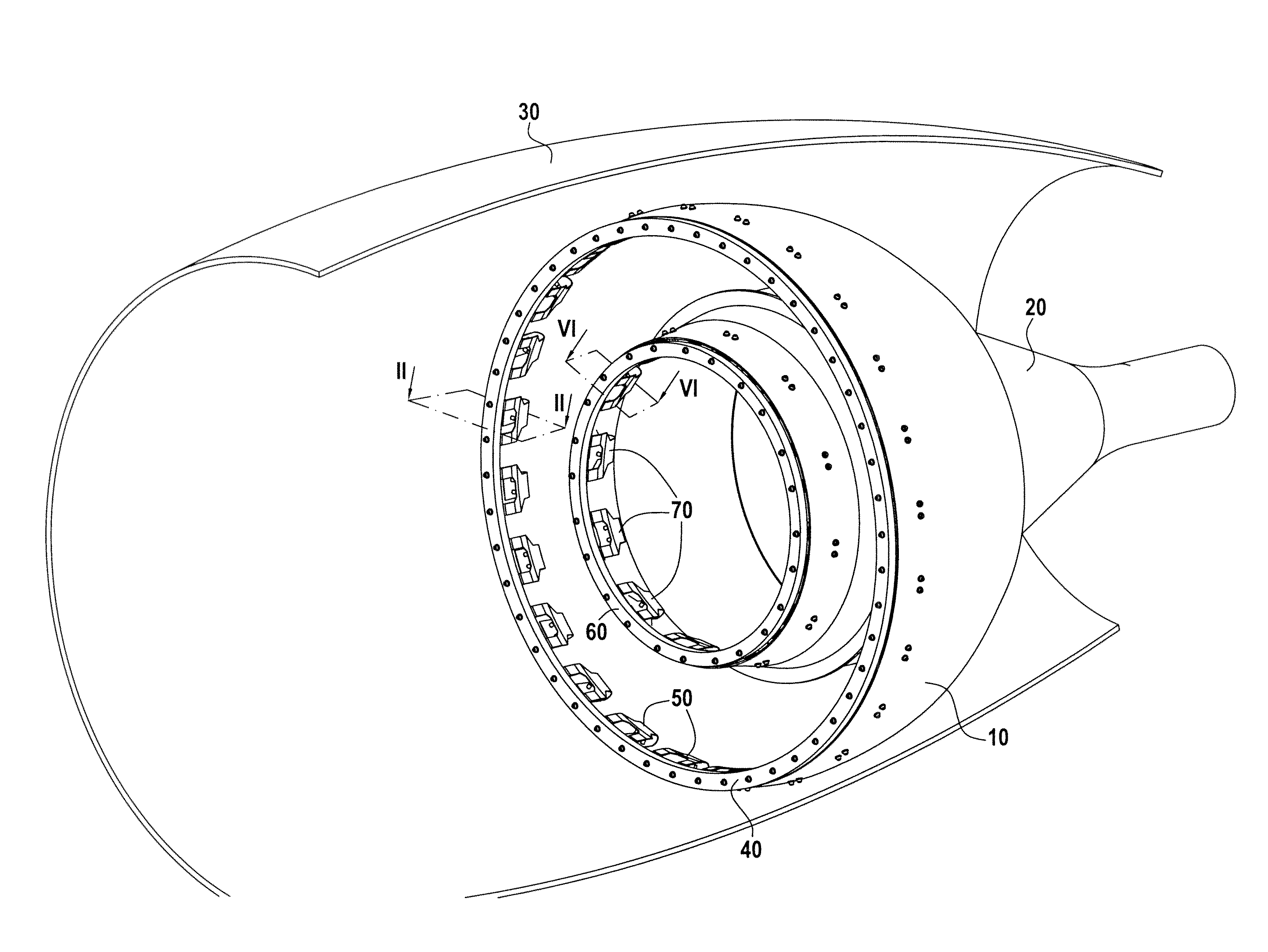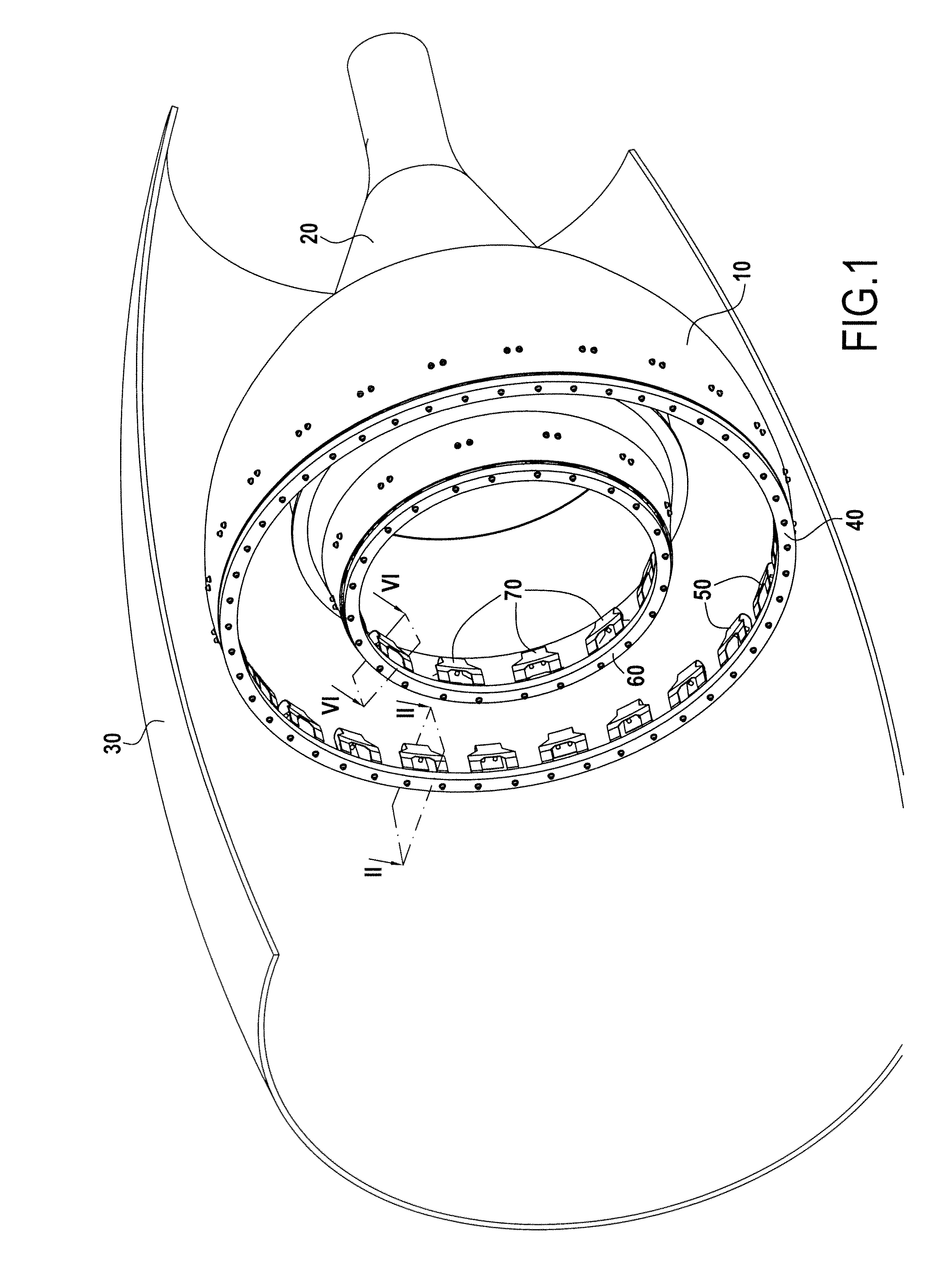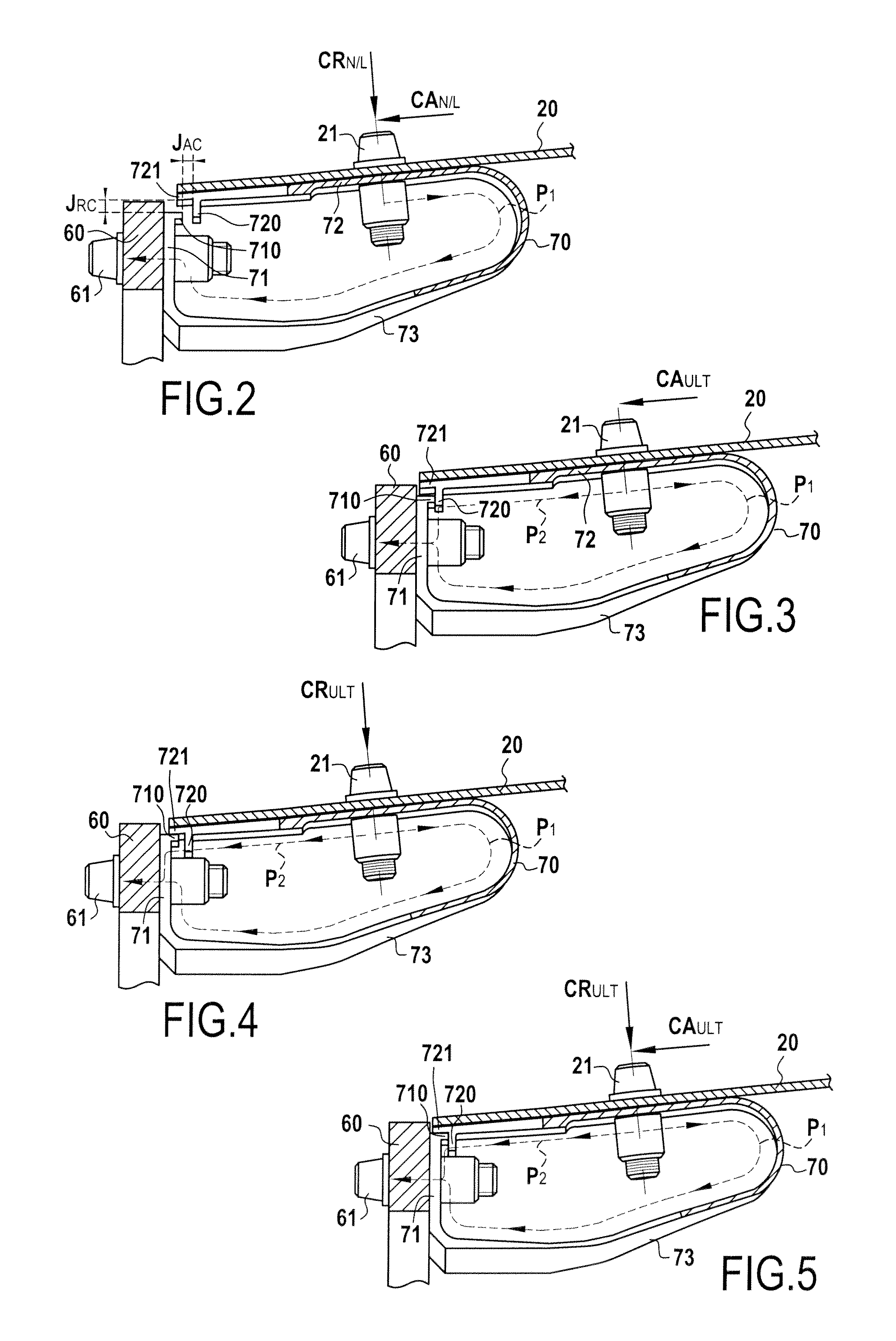Flexible abutment links for attaching a part made of cmc
a technology of flexible fastener tabs and parts, applied in the direction of waterborne vessels, vessel construction, and force-bearing elements, can solve the problems of inability to justify making flexible fastener tabs capable of withstand ultimate loads, stiff connection, and excessive increase in overall weight, so as to achieve the effect of not degrading the flexibility of the connection
- Summary
- Abstract
- Description
- Claims
- Application Information
AI Technical Summary
Benefits of technology
Problems solved by technology
Method used
Image
Examples
Embodiment Construction
[0019]FIG. 1 shows a turbojet after-body constituting the exhaust system of the turbojet. The after-body comprises an ejection nozzle or primary nozzle 10 and a central body or exhaust cone 20 (also known as a “plug”), both located at least in part inside a nacelle 30. The primary nozzle 10 and the exhaust cone 20 are made of CMC material.
[0020]In well-known manner, CMC material parts are constituted by fiber reinforcement made of refractory fibers (carbon or ceramic fibers) and densified by a ceramic matrix, in particular a carbide, a nitride, a refractory oxide, . . . . Typical examples of CMC materials are C—SiC materials (carbon fiber reinforcement and silicon carbide matrix), SiC—SiC materials, and C—C / SiC materials (having a mixed matrix with both carbon and silicon carbide). The fabrication of CMC material parts is well known. The fiber reinforcement may be densified by a liquid technique (impregnation with a ceramic matrix precursor resin and transformation into ceramic by c...
PUM
 Login to View More
Login to View More Abstract
Description
Claims
Application Information
 Login to View More
Login to View More - R&D
- Intellectual Property
- Life Sciences
- Materials
- Tech Scout
- Unparalleled Data Quality
- Higher Quality Content
- 60% Fewer Hallucinations
Browse by: Latest US Patents, China's latest patents, Technical Efficacy Thesaurus, Application Domain, Technology Topic, Popular Technical Reports.
© 2025 PatSnap. All rights reserved.Legal|Privacy policy|Modern Slavery Act Transparency Statement|Sitemap|About US| Contact US: help@patsnap.com



